A Conversation With Sarah Lovett
by Claire E. White
Sarah Lovett took a somewhat circuitous

|
Her fiction known for its vivid characters, emotional resonance and spine-tingling suspense. In addition to her bestselling crime fiction, Sarah's nonfiction books include the award-winning "Extremely Weird" childrens' series. Her short fiction and how-to pieces are included in anthologies, and she's worked as a freelancer for newspapers and magazines. She's studied writing for page, stage, and screen with Sam Shepard, Robert McKee, Christopher Vogler, Natalie Goldberg, Irene Fornes, and Miriam Sagan. She has also enjoyed a season as guest playwright at Padua Hills Festival in California, and the role of artistic director of the Rockefeller grant recipient Theatre-in-the-Red.
Known for her rigorous research that goes into her books, Sarah has spent hours inside prisons talking with and interviewing inmates, she attends forensic psychology and psychiatry conferences and networks with experts in the field, and she's been a speaker at criminal justice meetings. She has a degree in criminal justice, and is currently pursuing a degree in psychology.
A native Californian, she lives in Santa Fe with her husband Michael Mariano and their two dogs. When she's not writing, you might find her doing Pilates, bike riding with her husband or trying out a new recipe. She spoke with us about her road to becoming a bestselling crime author and her new book, Dark Alchemy. She also gives some fascinating insights as to how she created Dr. Sylvia Strange.
What did you like to read when you were growing up?
Everything. My parents were book lovers. There were shelves of books in almost every room of our house. The local library, an old brick building next to a duck pond, was ten blocks away. I used to bring home stacks of books -- Sherlock Holmes, Nancy Drew, Kipling, Dickens, Stevenson; books on horses, books on pirates, adventure stories, mysteries. I filched my father's copies of James Bond novels, and my brother's John D. MacDonald series. I had two blue-stocking aunts on the east coast and when we went to visit they let me raid their shelves of mysteries: Agatha Christie, Dorothy Sayers, P.D. James. At one point I discovered the hard-boiled authors: Chandler, Hammett, Ross MacDonald.
How did you first get interested in forensic psychology?
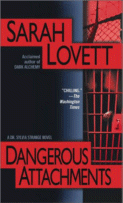
|
What led up to the publication of your first novel?
The intense desire to write and years of practice -- first as playwright, then nonfiction author, then finally, several drafts of the novel. Like most writers, I supported my writing career with other jobs, including the stint at the Penitentiary of New Mexico. I wrote at least two full drafts of Dangerous Attachments before the series sold to Random House. I wrote one of those drafts for my first agent; it took at least a year before the agency thought the manuscript was ready to make the rounds of the publishers. When my agent called with the news that the book had gone into a bidding war-and then called to say I had a six-figure deal -- I almost fainted.
How did you create the character of Dr. Sylvia Strange?
She's a composite -- part Nancy Drew, part Sherlock Holmes, part me, part people I've met who do that job day in and day out. She was born the day I walked into the penitentiary, my very first day on the job. My reaction was immediate and visceral -- the hair on my arms stood up. I ended up working inside the prison for four months. I think I began writing Dangerous Attachments about two days into the job.
How has Sylvia changed over the years?
I think, in a way, she's taken the brunt of the stress of my writing career. She began as a ballsy, compulsive, adrenaline-driven woman working in the trenches of a very male world. On top of that, she's reflected some of my own shock as I dealt with the pressures of a writing career -- such as producing a series and meeting deadlines at the same time I was learning how to write novels. To continue the layering, the demands of the thriller genre mean that any protagonist is pushed to the end of her limits with each book. She hasn't had a lot of R & R. All in all, I think Sylvia's conducted herself with admirable stamina and determination.
Let's talk about your new release, Dark Alchemy. What was your inspiration for this story? What sparked your interest into the world of neurotoxins?
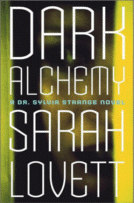
|
In Dark Alchemy, Sylvia is brought into the case by Edmond Sweetheart, a brilliant counterterrorist and computer expert who is also an amateur sumo wrestler. Edmond is a very mysterious character -- how did you create him?
Sweetheart began as a villain in an outline I never finished -- he was born as a mysterious and incredibly strong man accused of murder. The outline went into the trash, but Edmond Sweetheart stayed with me. I am very fond of sumo as a sport, and I admire Asian culture, so it was fun to give him some roots in the East. I also knew that he was large, strong, and quite graceful. His physicality is a balance to his intellectual prowess. As for "mysterious", he is layered. He's one of those people who takes time to know -- in fact his deepest layers seem almost inaccessible, but they're not. With patience, he unfolds.
Sylvia is hired to profile a potential poisoner: the beautiful and brilliant Dr. Christine Palmer. I think Christine Palmer is an absolutely terrifying (and wonderful) character. What was the greatest challenge in creating Christine?
I think of Christine Palmer as someone who could inhabit a classic English mystery. She was very fun to work with, and she appeared on the page quite effortlessly. I think that's because I find her to be a sympathetic character. She is damaged, but she has managed to create her own moral laws or rules in an amoral world. She lives by her moral code. She is a damaged warrior. (I'm not sure I'm finished with her yet; she may return to play a part in a future story.)
If you were casting the film for this book, who could you see in the roles of Sylvia, Christine and Edmond?
Ashley Judd would make an interesting Dr. Strange. Chow Yun Fat is Sweetheart. Dr. Christine Palmer…I'll have to think about that.
What's next for Dr. Sylvia Strange?
| "I've been interested in psychology for most of my life, in part because I suffered from a fairly severe depression when I was a teenager. When it comes to the nature/nuture debate in psychology, I'm a believer in complex, dynamic, ongoing interplay between heredity and environment." |
Your books are always filled with interesting details. For example, the world of neurotoxins is chilling -- and very relevant to what's going on in the world today with the rise of global terrorism. How did you approach the research for this book?
I always begin by reading books, newspapers, magazines. I search the Internet, but I do it carefully because there's such a wide range of information out there. As I narrow my focus, I begin to talk to experts. I love doing interviews because I get information and I also glean a sense of real people doing real jobs.
How many countries would you say are conducting this kind of research into biological weapons? How far along is the research -- is the science to the point where these agents can be used easily against a population?
Groups like Sunshine-project.org are watchdogs. They track bioterrorism around the globe. They actually supply maps that show known labs -- and then they make educated guesses about where covert labs might be. One of the ways to track research -- bioterrorism, nuclear weapons, chemical weapons, etc. -- is to look for a dearth of publishing. The secret research isn't shared openly. During the A-bomb project at Los Alamos, scientists who were working secretly stopped publishing.
The scariest thing about weapons research (biological, chemical, nuclear) is the fact that there's no way to separate offensive and defensive research. I'd say all countries are interested in defending themselves against biological and chemical weapons. I think the research has reached a high level of sophistication. It's not just legitimate governments who have access to this research. So, yes, we should be worried.
What kind of personality does one have to have to devote one's life to the study of neurotoxins and other deadly agents that could be used for great harm? Did you get to talk to any scientists who do this kind of work?
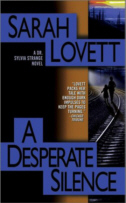
|
What was the wildest/most dangerous thing you've ever done in the name of research?
I spent a day with an explosives expert; we were working on a job and I was the one who got to prime the fuses and push the button on the detonator. We ended up diving under a truck to avoid falling debris. I've also been locked inside a trunk (my choice) and driven half a mile on a dirt road. I toured the flood tunnels under Los Angeles. And then there was the time…
Your books have been praised for a number of elements, including their complex and intriguing plots. What is your approach to plotting -- do you outline the plot first? Or is it a more organic process for you?
My plotting process has changed over the years. I've consciously searched for ways to understand narrative and story structure. That study of narrative began as an external process -- taking workshops on playwriting, screenwriting, and novels, reading books on narrative, and then practicing, practicing, practicing what others preached. Eventually, over the course of five, six, seven novels, I've found ways to internalize structure that make sense to me. I don't believe there's any one right way to create story, but I know there are universal elements and there are tools that seem to be universally helpful. I think we can generalize about the ways in which women and men differ in their basic story concepts -- and then we can learn from each other. Basically, I break down my process into a yin and yang, a balancing, a dance between conscious plot points and classic structure, and a more unconscious, intuitive geometry of story. The final balance varies from novel to novel.
You write about some very disturbing subjects. Do the images you invoke with your writing ever bother you? Or are you able to put them out of your mind, after a day's writing is over?
When I was working toward my degree in criminal justice I was taking a lot of classes in forensic psychology. Some of the material was extremely disturbing. As a writer I can vary my research and writing topics. I really admire those people who choose to work day in and day out in jobs where they deal with the violence and suffering of perpetrators and victims. Honestly, I don't think I could do it.
I was intrigued to learn that, in addition to your novels, you also write for children. How did the "Extremely Weird" children's series come about?
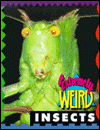
|
I'd like to talk about the day to day details of writing. Would you take us through a typical writing day for you?
A favorite work day would be a combination of writing and reading and mulling and riding my bike. I used to write at all hours -- and I still do when I'm on deadline -- but I'm best in the morning. I'm usually researching one project or another so I take a break from the writing to read. Yes, I write at the computer. But I also write long-hand. When I'm editing my work, I take the pages to bed. I have a comfortable office and it's filled with books -- two entire walls, floor to ceiling, are solid shelves and the books are piled every which way. I have boxes of books that don't fit anywhere. I don't have a set number of pages; it's more about what I need to be doing on a given book. After a few days, if I haven't gotten to my work, I get grumpy. As for the bicycle, I love taking our dogs for a long ride each day; I almost always end up coming back with new ideas, lines of dialogue, scenes, etc. Peddling is a great way to problem-solve.
Tell us about your writing workshops. What prompted you to start teaching?
| "My plotting process has changed over the years. I've consciously searched for ways to understand narrative and story structure. That study of narrative began as an external process -- taking workshops on playwriting, screenwriting, and novels, reading books on narrative, and then practicing, practicing, practicing what others preached. Eventually, over the course of five, six, seven novels, I've found ways to internalize structure that make sense to me. I don't believe there's any one right way to create story...." |
But as I wrote the last two novels in the series -- and as I continued working on another group of novels that are not thrillers -- I realized I've learned quite a bit about writing narrative fiction. All the material I'd gathered from years of studying playwriting and screenwriting and novels, and all the things I'd discovered about my own process -- through trial and error -- began to come together and evolve into my Building Story workshops. Every time I teach I end up learning something new and exciting about narrative and story.
What are the most common writing mistakes that you see with beginning writers?
False starts. To me, that means diving into the writing before the story has been fully gestated. Do I mean fully plotted? Not exactly. As I mentioned before, not everyone plots out a story from beginning to end. But each writer has to discover her way to let the story mature internally before it's put out into the world on paper. I think we've all been tempted as writers to believe we have a great story, when actually, we have a great idea. That idea needs to be expanded, tested, stressed, explored, and challenged. It needs a beginning, middle, end -- it needs drive, and drive comes from understanding what's at stake in the story. Another common mistake: believing a good story is your story to write. We've all thought up nifty stories; our friends say, "Wow, that would make a great movie." But is that story ours to write? I find I keep files of story ideas. The ideas that survive and expand over the months and years warrant a closer look. If the passion stays alive for me as the writer, I begin to think, yes, that is my story to write.
Writing is such a sedentary profession. What do you do to keep in shape? Do you still dance?
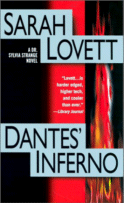
|
When you're not writing, what do you like to do for fun?
Biking, hiking, cooking, camping, eating, movies, learning, books, pilates, exercise, travel, playing with my husband Michael and our friends and our family.
More from Writers Write
Stephen King Quotes
quotes from the master
quotes from the master
Grammar Tips
improve your writing
improve your writing
Writing Prompts
spark your creativity
spark your creativity
